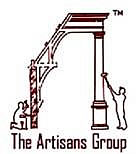The Public Contracts Code generally provides that contracts for certain dollar amounts, generally exceeding $15,000 to $25,000, must be sent out for bid and let to the lowest responsible bidder after appropriate notice is given. Public Contracts Code § 20803, which governs sanitary districts, contains such a requirement for any contract exceeding $15,000.
The Ross Valley Sanitary District in Marin County was subject to § 20803 It recognized that it needed to replace approximately 139 miles of its sewer pipe due to the age and condition of the pipe. Rather than sending the project out for bid, however, the district hired new employees to use a modern technique called pipe bursting that was a cost-effective solution for the repair of old pipes.
The Construction Industry Force Account Council, Inc., an industry association, challenged the district's decision and sought a writ of mandate that would require the district to let the contract out for bid. The trial court issued such a writ and judgment was entered against the district. The district appealed.
In Construction Industry Force Account Council, Inc. v. Ross Valley Sanitary District (January 25, 2016)------ Cal.App.4th ------2016 DJDAR1694, the court reversed the granting of the writ of mandate and ruled in favor of the district. The court determined that the trial court misread § 20803 to require that any projects exceeding $15,000 must be let out to bid. Rather, the court adopted the district's argument that § 20803 only applies where a contract is let out for bid, but does not preclude the district from using its own employees to perform the work. Specifically, the court determined that "§ 20803 contains no express statutory directive limiting a sanitary district's authority to perform Force Account work. The silence is indeed significant...," citing Construction Industry Force Account Council v. Amador Water Agency (1999) 71 Cal.App.4th 810, 815, which held that "absence a statutory directive, a public agency is not bound to engage in competitive bidding." (2016 DJDAR 1694 at 1696-1697.)
The court determined that due to the lack of any legislative requirement for competitive bidding for Force Account work, the district was free to use its own employees. In fact, the court also pointed to the legislative history to support its analysis.
This case will certainly benefit governmental entities who hire their own employees to perform work that could otherwise be contracted out. For those contractors which may be affected by this decision, fear not. Appealing to the various governmental entities to let their employees compete against outside contractors may provide an alternative for you. After all, though competitive bidding may not be required, it nevertheless does benefit the public, and all politicians want to protect the public treasury.
Darryl Horowitt, Esq., has conducted all phases of litigation in the areas of Banking, Business Disputes, Securities Fraud (class action and individual), Construction, Real Estate, Environmental, Casualty Insurance Defense, Personal Injury and Commercial Collections, from initial client contact to settlement, mediation, arbitration and trial - court and jury (State and Federal Court) and administrative proceedings (before the United States Environmental Protection Agency, Department of Agriculture, National Labor Relations Board, California Department of Fair Housing and Employment, Worker's Compensation Appeals Board and Agricultural Labor Relations Board).
©Copyright - All Rights Reserved
DO NOT REPRODUCE WITHOUT WRITTEN PERMISSION BY AUTHOR.











